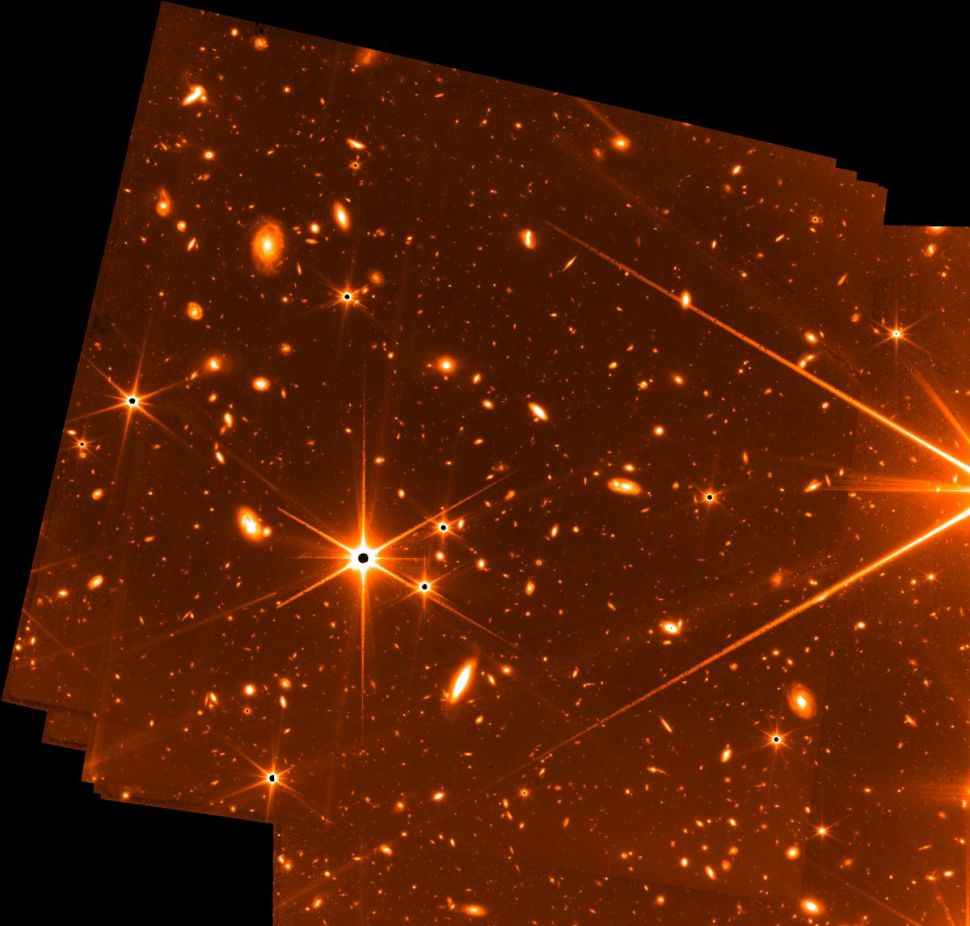The infrared view of the James Webb telescope has reached the depths of the Universe. This happened when testing the object guidance system. But even such test photos are amazing.

Infrared View of the James Webb Observatory
On July 6, the James Webb Space Telescope tested an accurate object guidance system. Its near-infrared camera aimed at the star HD147980, and the telescope began to shake from side to side, trying to keep it in focus. Thus, scientists were convinced that during rotation this tool will be able to take long panoramic photos.
The test lasted 32 hours. Its by-product was an image made up of 72 separate snapshots. The photo was created in artificial colors, because the telescope still works in the infrared spectrum, which the eye does not perceive.
The lightest colors in the image correspond to the brightest infrared radiation, and the most saturated — on the contrary, of lower intensity.
The image shows several stars that appear to be crosses due to the phenomenon of diffraction, that is, electromagnetic radiation bypassing interference. The rest of the dots on it are galaxies, and their number is amazing. After all, there is a section of the sky in the picture that looks empty even with medium-power telescopes.
Look into the depths of space
On July 12, at 05.30 p.m. UTC+3, scientists promise to publish the first images from the James Webb telescope, which have scientific value. The composite photo published today allows us to understand what these pictures will look like. It is a test and its quality leaves much to be desired, but today it is the deepest infrared view of the Universe.
The most interesting thing in the new photo is the weakest spots. This is what galaxies that appeared just a few hundred million years after the Big Bang look like. These are what James Webb will study during its mission. Scientists expect to significantly refine our understanding of the evolution of the universe.
According to www.space.com
Follow us on Twitter to get the most interesting space news in time
https://twitter.com/ust_magazine

